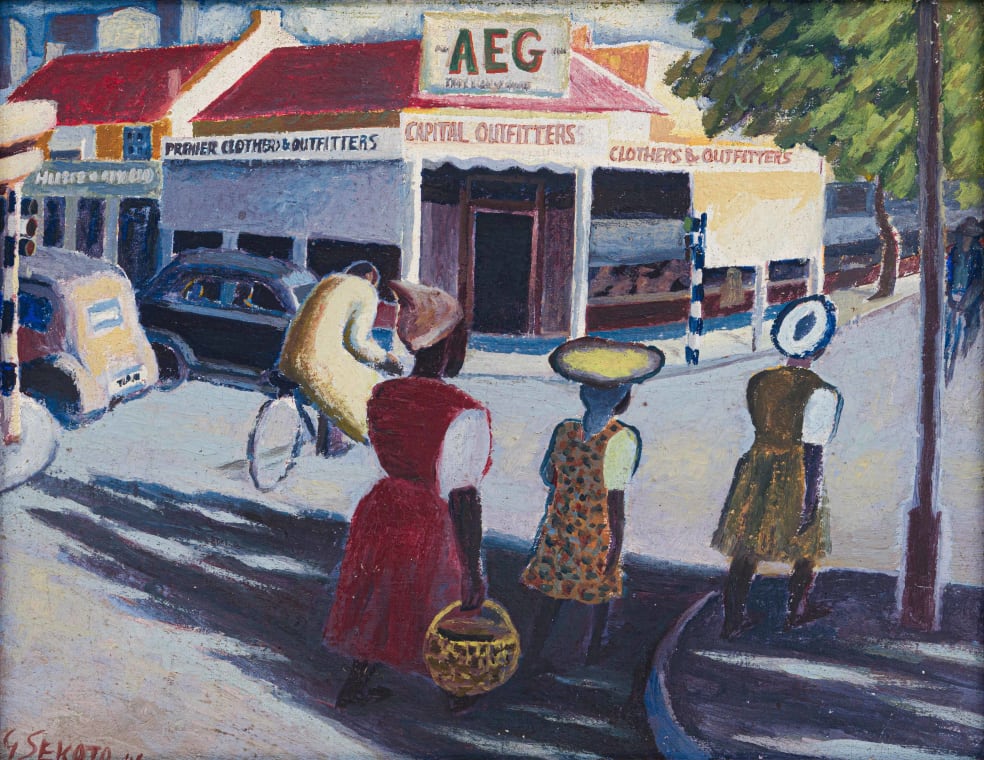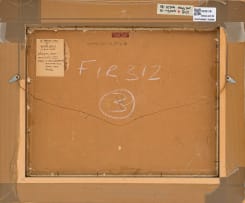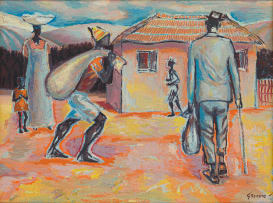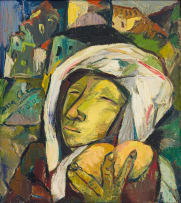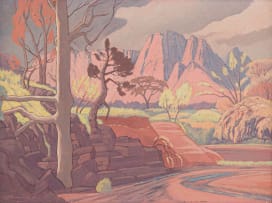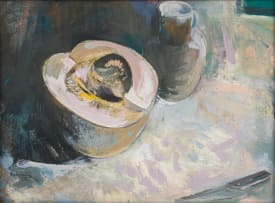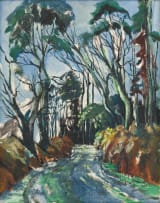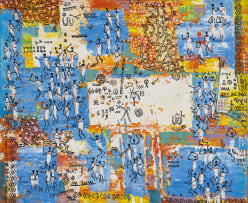Modern and Contemporary Art
Live Virtual Auction, 16 May 2023
Modern and Contemporary Art
Incl. Buyer's Premium & VAT
About this Item
signed and dated 1946; inscribed with the artist's name, the title and "(for Kenya) New Group Exhibition" on a label adhered to the reverse
Notes
Many of Gerard Sekoto's era-defining paintings were made during his two year stay in Eastwood, a peri-urban Pretorian settlement, between 1945 and 1947. From this period came solemn, gorgeous, and life-affirming paintings such as Song of the Pick and Sixpence a Door (both 1946). While ever-conscious of the inequitable racial divisions that defined his country, Sekoto was drawn to poignant domestic scenes and workaday subjects. In the current lot, an exquisite and gentle example from the artist's pre-exile golden moment, a shop assistant, perhaps in his lunch hour, freewheels through the intersection of Prinsloo and Vermeulen Streets in downtown Pretoria. Three young women, one with a basket in her hand, another with one balanced on her head, move across in the same direction through dappled shade. Of course, this snapshot of urban order and calm belied the reality of the black majority. With this front of mind, Sekoto left for Paris, via London, in 1947, never to return. Thanks to the recent re-naming of streets in Pretoria, Sekoto's scene would now be taking place on the corner of Madiba and Sisulu Streets.
Provenance
Philippe Smith le Roux.
Literature
Barbara Lindop (1988). Gerard Sekoto, Johannesburg: Dictum Publishing, illustrated in colour on page 184 with the title 'Up Vermeulen Street'.
Wits Art Museum, Johannesburg, Song for Sekoto: Gerard Sekoto 1913-2013, 25 April to 2 June 2013, illustrated in colour on page 99 with the title 'Up Vermeulen Street'.
